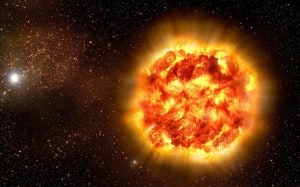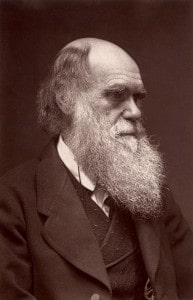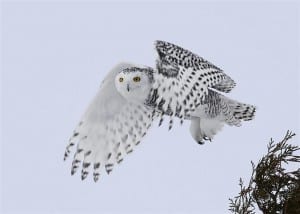I remember feeling sad
That miracles don’t happen still
Now I can’t keep track
Because everything’s a miracle.
From “Holy Now” by Peter Mayer
The great wheel of the year has once again brought us to the end of December. At this time of reflection, we have much to be grateful for. At the same time, however, it is easy to become disillusioned. From the continued muzzling of Canadian scientists by the federal government to the failure of climate change talks in Warsaw, there seems to be less and less respect for science and for evidence-based decision making in general. Too many of us still go on believing things that have been proven demonstrably false – one example being that we can continue to pour CO2 into the atmosphere with little or no negative effects.
I have long believed that the starting point for ushering in a more rational, evidence-based way of thinking is to respect and honour evidence of the most fundamental kind, namely the evidence from mainstream science that explains our place and story in the Universe. A story is something that allows us to orient ourselves in the world and to find our way forward. It tells us who we are and thereby provides fundamental meaning to our lives.
The story I’m referring to is nothing less than what it means to be human and to be surrounded by this Universe from which we emerged. Not knowing, honouring and embracing the story as “revealed” by science is what allows human society to have so little regard for the health of the planet and for the flourishing of other life forms. It explains how we are able to live in denial about climate change and other existential threats. As human beings, we experience ourselves, our thoughts and our feelings as somehow being outside of nature and that we live on Earth like on some kind of stage. We now know, however, that this too is a kind of delusion.
The Old Story
The old story of what it is to be human – some might call it the redemption story – was informed mostly by traditional religion in a time pre-dating modern science. It came to us through private revelation – revelation that we never used to question because, prior to science, we had no real way of knowing anything for certain.
Although the Old Story sustained us for millennia, we now know that it does not reflect the true nature of the Universe. It tells us that we are not part of nature but somehow outside and above it, that nature is there for our consumption and, in some forms of this story, that all that really matters is what awaits us after death. The Old Story is what allows some religious fundamentalists to blow themselves up since they know they will be going to Heaven. Clearly, this story is no longer sustaining us, especially in a world with seven billion people and nuclear weapons. Nor has it provided any kind of meaningful response to the environmental crisis.
The New Story
What is the New Story? In simplest terms, the story is one of never-ending creativity. It begins with the Big Bang, a great radiance of light that occurred some 13.7 billion years ago. Flaring forth from a space infinitesimally small, the Universe expanded and cooled. As the elementary particles stabilized, hydrogen and helium atoms were formed and eventually gathered together to make stars. When these stars died in stellar explosions known as supernovae, the helium and hydrogen atoms were transformed into new atoms that had not existed before such as carbon, oxygen, phosphorous and iron – the stuff of all life.
Another level of creativity appeared when planets such as our Earth began to take shape. The stage was now set for yet another blossoming of ingenuity in the Universe – the emergence of life about four billion years ago. Over unfathomably long eons of time, organisms became more complex. Life started packaging itself in multicellular forms. Some forms were able to capture the sun’s energy through photosynthesis. Other forms became predators. The predator-prey relationship would lead to novelty upon novelty. Eventually, everything from eyesight to sexual reproduction emerged, often independently and in different ways in different organisms.
And then something took place about seven million years ago in Africa that ignited a new line of apes that acquired massive brains and the ability to dream, ponder, show compassion, remember and anticipate. Whatever the exact mechanism, consciousness arose, thanks largely to our ability to externalize our thinking through oral and written language. This, in turn, led to the staggering cultural and scientific accomplishments of Homo sapiens. So, who are we as human beings? In the words of Carl Sagan, “we are the embodiment of a Cosmos grown to self-awareness. We have begun to contemplate our origins – starstuff pondering stars!” Like every other living thing, we have emerged from the elements created in supernovae and the interplay of sunlight, water, atmosphere and especially time.
As humans, we are meaning-making creatures. Possibly one of the first events we pondered was the Winter Solstice. On December 21st the northern hemisphere is tipped farthest away from the sun. From our perspective, we see the sun tracing its lowest arc through the southern sky. The solstice has always been a time of awe and amazement and is believed to have been a precursor to faith. As the hours of daylight grew shorter and shorter, our ancestors thought the end of the world was coming But, just when the world appeared to be on the brink of utter darkness, the sun would once again begin to climb higher and higher in the sky. Clearly, this was a time for rejoicing and giving thanks.
Inspiration
A huge part of understanding and embracing the New Story is its ability to answer all of the fundamental questions of who we are. But just as importantly, it inspires wonder. How could a curious young person who has been taught this story not want to become a scientist! There is still so much to be discovered and explained, including the exact mechanisms of the origin of life and how the Universe emerged from “nothing”. Supernatural explanations are no longer required. Modern physics has even discovered that there is always “something,” even in the vacuum of deepest space.
Seen through the lens of evolution, every life-form that exists is far more amazing than we ever could imagine. Although our education system still does a terrible job of teaching it, we now understand how this process works: All organisms struggle to survive and reproduce but many fail. Thanks to random genetic mutations, some creatures are born with a helpful trait (e.g., a slightly bigger beak) and are therefore the most likely to survive and reproduce. Parents pass on the useful trait(s) to their young. Over time these new traits lead to a new species. When I look at plants and animals, such as the Snowy Owl I saw last week, I try to reflect on just how magical the reality of evolution actually is. Is it not incredible that this process can mold a creature with fringed feathers for silent flight, asymmetrical ear placement for pin-point hearing precision and front-facing, tubular eyes for visual acuity we can’t even imagine? Even naturalists need to be far more appreciative of the evolutionary wonder of every organism they contemplate. As Peter Mayer sings, “everything’s a miracle.”
A religious view
If one wants to use the language of religion, an understanding of the New Story as holy enlarges and enlivens faith. God can be understood as the divine, proper name for the Wholeness of Reality, including the intrinsic creativity of the Universe that is at the core of the New Story. This is not to imply that there is a force or intelligence that is making evolution or the Cosmos itself go in a particular direction. As for Jesus, it is his humanity that is all important, not his supposed divinity. We, of course, are reminded of his transformative compassion at Christmas. For me the carols and hymns inspire as much joy and Yuletide goodwill as ever. In some ways, I probably appreciate them even more now, since I no longer have the burden of trying to convince myself that the many miracles eluded to are factually true. If we are ever to respect science and evidence, we need a spirituality that is coherent with reality. Civilization is far more likely to thrive if people everywhere are offered ways of thinking about science – and especially evolution – that they can enthusiastically embrace.


